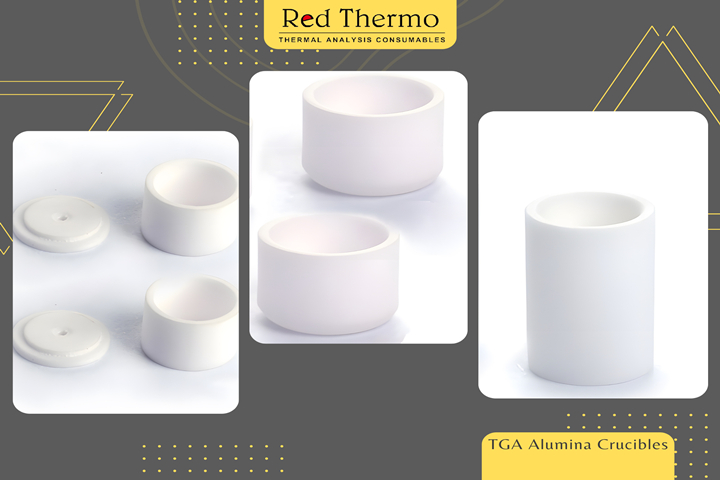Your cart is empty.
shop now
Your cart is empty.
shop now
Thermogravimetric Analysis is a technique used to study the thermal stability of materials. The method involves measuring the weight change of a sample as a function of temperature or time while it is subjected to a controlled atmosphere. TGA analysis provides information about a sample's thermal decomposition, composition, and other thermal properties. The TGA instrument consists of a furnace, a balance, and a gas flow system. The sample is placed in a crucible, which is heated to a specific temperature at a constant rate, while the weight change of the sample is continuously monitored.
Alumina crucibles are widely used in TGA analysis due to their high-temperature stability, chemical inertness, and mechanical strength. Alumina is a ceramic material with high hardness, high melting point, and excellent thermal shock resistance. Alumina crucibles are available in various sizes, shapes, and porosities. The porosity of the crucible is an essential factor to consider when selecting the appropriate crucible for TGA analysis.

There are two types of alumina crucible porosity: open and closed porosity. Open porosity refers to the interconnected void spaces that allow gas to flow through the crucible walls. Closed porosity refers to the isolated pores that do not allow gas flow through the crucible walls.
The porosity of the alumina crucible has a significant effect on the TGA analysis. The open porosity of the crucible allows the gas to flow through the walls, resulting in better gas exchange between the sample and the atmosphere. The closed porosity of the crucible can lead to gas entrapment, affecting the TGA analysis's accuracy and reliability.
The open porosity of the crucible is crucial when performing experiments that require gas flow or chemical reactions. The open porosity allows for efficient gas exchange between the sample and the atmosphere, resulting in accurate TGA results. Closed porosity is beneficial when working with reactive or volatile samples. The closed pores prevent the gas from escaping from the crucible, resulting in a more controlled and consistent analysis.
Choosing the right alumina crucible porosity depends on the specific application and analysed sample. Open porosity crucibles are recommended for TGA experiments that require gas flow or chemical reactions. Closed porosity crucibles are suitable for reactive or volatile samples. The crucible's porosity also affects the sample's weight loss rate, with open porosity crucibles resulting in faster weight loss rates than closed ones.
In conclusion, the choice of alumina crucible porosity is an essential factor to consider when performing TGA analysis. The porosity affects the accuracy and reliability of the TGA results and depends on the specific application and sample being analyzed. Open porosity crucibles are recommended for experiments that require gas flow or chemical reactions, While closed porosity crucibles are suitable for reactive or volatile samples. The selection of the appropriate crucible can significantly affect the outcome of TGA experiments, and it is important to carefully consider the porosity of the crucible to achieve accurate and reliable results.
1. What is TGA analysis?
Thermogravimetric Analysis is a technique used to study the thermal stability of materials by measuring the weight change of a sample as a function of temperature or time while it is subjected to a controlled atmosphere.
2. What is the importance of alumina crucibles in TGA analysis?
Alumina crucibles are widely used in TGA analysis due to their high-temperature stability, chemical inertness, and mechanical strength.
3. What is the role of alumina crucible porosity in TGA analysis?
The porosity of the alumina crucible has a significant effect on the TGA analysis, affecting the accuracy and reliability of the results. The open porosity of the crucible allows for efficient gas exchange between the sample and the atmosphere, while closed porosity is beneficial when working with reactive or volatile samples.
4. How do I choose the appropriate alumina crucible porosity for my TGA experiment?
The choice of alumina crucible porosity depends on the specific application and sample being analyzed. Open porosity crucibles are recommended for experiments that require gas flow or chemical reactions, while closed porosity crucibles are suitable for reactive or volatile samples.
5. Why is selecting the appropriate alumina crucible for TGA analysis important?
The selection of the appropriate crucible can significantly affect the outcome of TGA experiments, and it is important to carefully consider the porosity of the crucible to achieve accurate and reliable results.